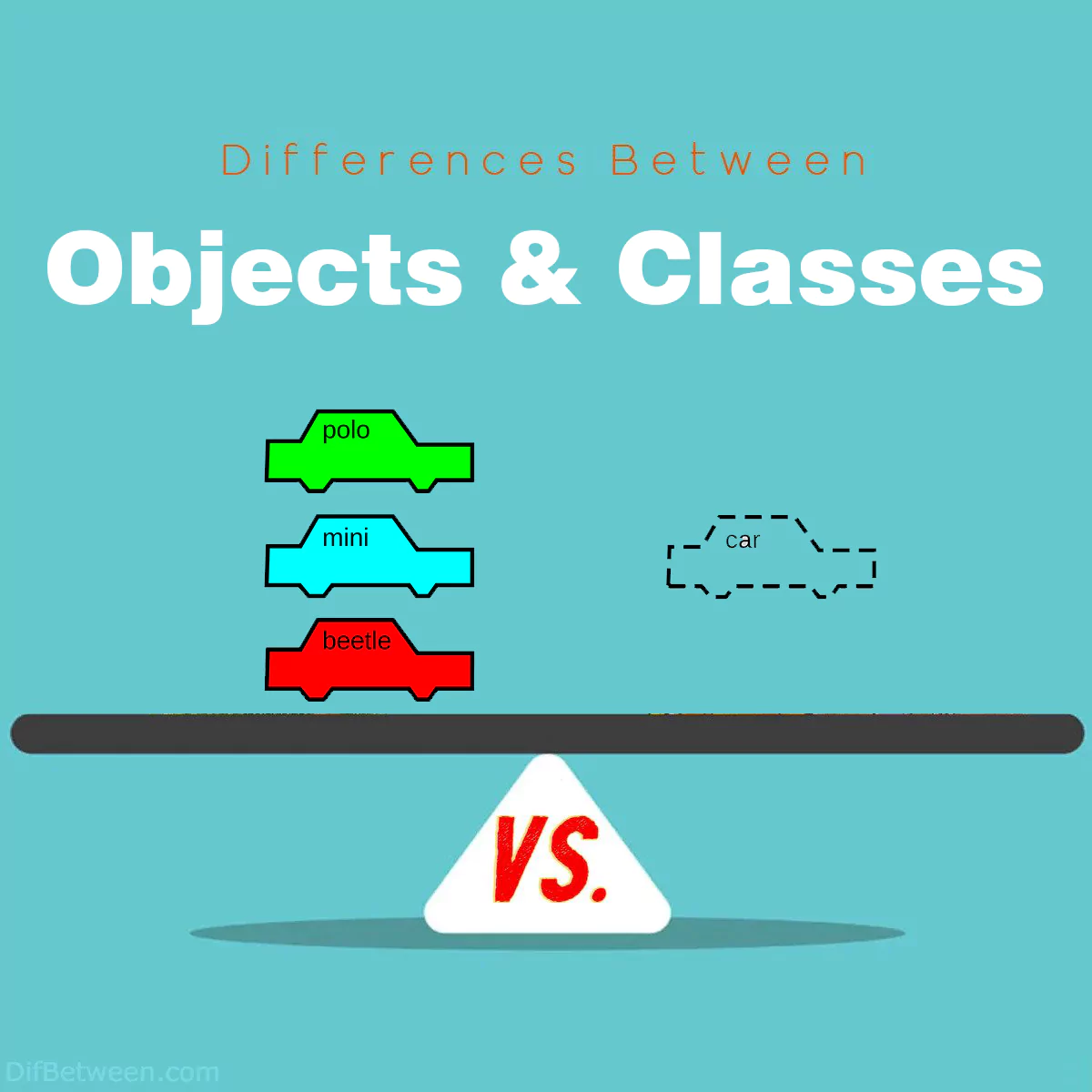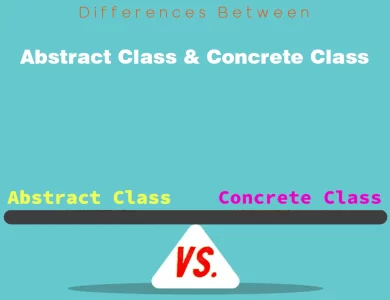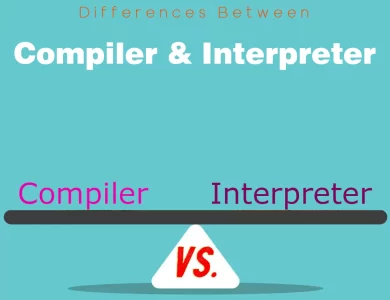
| Aspect | Objects | Classes |
|---|---|---|
| Definition and Purpose | Instances of classes that represent real-world or abstract entities. | Blueprints or templates for creating objects, defining their structure and behavior. |
| Instantiation | Created at runtime and represent individual entities with unique data. | Defined in the source code and serve as prototypes for creating objects. |
| Inheritance | Objects do not inherit from other objects. Each is self-contained. | Classes can inherit attributes and methods from other classes, promoting code reuse. |
| Polymorphism | Objects of different classes can respond to the same method call uniquely. | Polymorphism is implemented using classes, allowing objects of different types to be treated as instances of a common base class. |
| Access Control | Objects have no direct access control. It depends on class-level settings. | Classes define access control for attributes and methods, allowing public, private, and protected access. |
| Memory Usage | Each object consumes memory, depending on its data and associated overhead. | Classes themselves do not consume memory at runtime; memory is allocated when creating objects. |
In the world of programming, especially in object-oriented languages like Python, Java, or C++, two fundamental concepts play a significant role: objects and classes. These concepts form the backbone of object-oriented programming (OOP), allowing developers to create efficient, organized, and reusable code. However, it’s essential to understand the key differences between objects and classes to harness their full potential. In this comprehensive guide, we will delve into these differences, elucidating each aspect in detail.
Differences Between Objects and Classes
The main differences between objects and classes lie in their fundamental roles within object-oriented programming. Objects are instances of classes, embodying real-world or abstract entities and holding runtime-specific data, while classes serve as blueprints or templates for creating objects, defining their structure and behavior. Classes offer code reusability through inheritance, access control, and a standardized interface, making them crucial for designing well-organized software. In contrast, objects are dynamic, adaptable, and respond to method calls uniquely, making them suitable for representing individual entities and handling changing data in runtime. Understanding these distinctions is pivotal for effective object-oriented programming.
Definition and Purpose
Objects: Objects are instances of classes in programming. They are tangible entities that represent real-world or abstract concepts. Think of objects as the building blocks of your code, each with its own data and behavior. They encapsulate both data (attributes) and methods (functions) that operate on that data. Objects are created based on the structure defined by classes.
Classes: Classes, on the other hand, are blueprints or templates for creating objects. They define the structure, behavior, and attributes that objects of that class will have. In essence, a class serves as a user-defined data type that encapsulates data and the functions to manipulate that data. You can think of classes as the molds from which objects are cast.
Explanation:
Objects are like the tangible items you use in everyday life, such as a smartphone, a car, or a book. In programming, objects represent these real-world entities, complete with their characteristics and capabilities. For instance, if you’re building a software application to manage a library, you might create objects to represent individual books, each with its title, author, and a set of functions like borrowing or returning.
Classes, on the other hand, are the blueprints or templates used to create these objects. They define the structure and behavior that the objects will adhere to. Continuing with the library analogy, the class “Book” would specify what data attributes a book object should have (e.g., title, author) and what actions it can perform (e.g., borrow, return).
Instantiation
Objects: Objects are instances of classes, and they are created at runtime. When you create an object, you’re essentially making a copy of the class blueprint, giving it a unique identity. Each object can have different values for its attributes while sharing the same methods defined in the class.
Classes: Classes, on the other hand, are defined in the source code before runtime. They serve as the prototype for creating objects. You can create multiple objects from the same class, and each object will have its own set of attribute values, distinct from other objects.
Explanation:
When you want to work with a specific concept or entity in your program, you create an object of the corresponding class. For instance, if you’re building a game, you might have a class called “Player” to define the characteristics and abilities of players in the game. During the game, you would create individual player objects, each with its own name, score, and abilities.
Classes, conversely, are defined beforehand, often as part of the initial codebase. They lay out the blueprint for creating objects. In the context of our game, the “Player” class would define the common attributes and methods that all players should have. When you start the game, you can create as many player objects as needed, and each one will be a distinct entity with its own attributes.
Inheritance
Objects: Objects do not inherit from other objects. Each object is a self-contained instance of its class, with its own data and behavior. Changes made to one object do not affect other objects of the same class.
Classes: Classes can inherit attributes and methods from other classes through inheritance. Inheritance allows you to create a new class based on an existing class, inheriting its properties. This promotes code reuse and allows you to build upon existing functionality.
Explanation:
Imagine you’re designing a program for a zoo, and you have various animal objects, such as lions, tigers, and bears. Each of these objects has common attributes like “name,” “species,” and “age,” but they also have unique attributes and behaviors.
For objects, there is no inherent concept of inheritance. Each animal object is distinct, and changes to one animal object don’t affect others. If you change the age of a lion object, it doesn’t impact the age of a tiger object.
However, for classes, inheritance is a powerful feature. You can create a base class, such as “Animal,” with common attributes and methods that all animals share. Then, you can create subclasses like “Lion,” “Tiger,” and “Bear,” which inherit from the “Animal” class. This means that the subclasses automatically have the attributes and methods of the base class while allowing you to add specific attributes or behaviors unique to each animal type.
Polymorphism
Objects: Polymorphism in objects refers to the ability of objects of different classes to respond to the same method or function call in a way that is appropriate for their respective classes. This is achieved through method overriding and interfaces (in languages like Java and C#).
Classes: Polymorphism is a concept often implemented using classes. It allows objects of different classes to be treated as objects of a common base class. This enables you to write more generic code that can work with a variety of objects.
Explanation:
Polymorphism is a concept that facilitates flexibility in your code. It allows objects to respond differently to the same method call, depending on their specific class.
In object polymorphism, you can have different objects respond to the same method call in a way that makes sense for their individual classes. For instance, in a drawing application, you might have various shapes like circles, rectangles, and triangles. Each shape is an object of its respective class, but they all have a method called “draw.” When you call the “draw” method on a shape object, it knows how to draw itself according to its class.
Classes play a significant role in achieving polymorphism. You can create a base class called “Shape” with a “draw” method, and then derive subclasses like “Circle,” “Rectangle,” and “Triangle.” Each subclass can override the “draw” method to implement its specific drawing logic. This way, you can treat all shapes as instances of the “Shape” class, allowing you to write code that works with a variety of shapes without knowing their specific types.
Access Control
Objects: Objects do not have access control in the same way classes do. Once an object is created, it can access its own attributes and methods, but access to those attributes and methods from outside the object depends on the visibility and access control settings defined in the class.
Classes: Classes define access control for their attributes and methods. This control determines whether attributes or methods are public, private, or protected. Public attributes and methods can be accessed from anywhere, private attributes and methods are restricted to the class itself, and protected attributes and methods allow access from within the class and its subclasses.
Explanation:
Access control is essential for maintaining the integrity and security of your code. It determines who can interact with and modify the data and behavior of objects.
For objects, access control is indirect. Once you create an object, it can access its own attributes and methods. However, how other parts of your program can access those attributes and methods depends on how they are defined in the class. For example, if an attribute is declared as public in the class, it can be accessed directly from outside the object. If it’s private, it can only be accessed within the class itself.
Classes, on the other hand, provide a clear mechanism for access control. You can specify the visibility of attributes and methods when defining the class. This ensures that attributes or methods you want to keep private (accessible only within the class) remain so, while those you want to expose to the outside world can be marked as public. This level of control allows you to design APIs and libraries with well-defined interfaces, enhancing code maintainability and security.
Memory Usage
Objects: Each object created at runtime consumes memory. The memory usage depends on the data attributes defined in the class, as well as any additional memory required for bookkeeping and method dispatch.
Classes: Classes themselves do not consume memory at runtime. They are a part of the codebase and are used as blueprints for creating objects. Memory is allocated for objects when they are instantiated from classes.
Explanation:
Memory management is a crucial aspect of programming, particularly in resource-constrained environments or when dealing with large datasets.
Objects, being instances of classes, consume memory. The memory usage of an object depends on the data it holds, which is specified by the attributes defined in the class. In addition to the data, there is also a small overhead for bookkeeping and method dispatch, although this overhead is typically negligible compared to the data itself.
Classes, in contrast, do not consume memory at runtime. They exist solely in the codebase and are used as templates for creating objects. Memory allocation happens when you create objects from classes. This separation between class definition and object instantiation allows for efficient memory usage, especially when you need to create multiple objects of the same class.
Examples in Popular Programming Languages
Now that we’ve explored the key differences between objects and classes, let’s take a look at how these concepts are implemented in some popular programming languages: Python, Java, and C++.
Python
Python is known for its simplicity and readability. In Python, objects and classes are central to the language’s object-oriented programming paradigm.
Creating a Class in Python
class Dog: def __init__(self, name, breed): self.name = name self.breed = breed def bark(self): return "Woof!" # Creating an object of the Dog class my_dog = Dog("Buddy", "Golden Retriever") # Accessing object attributes and methods print(my_dog.name) # Output: Buddy print(my_dog.bark()) # Output: Woof!In this Python example, we define a class called “Dog” with attributes “name” and “breed” and a method “bark.” We then create an object of the “Dog” class and access its attributes and methods.
Java
Java is known for its platform independence and strong support for object-oriented programming. In Java, classes and objects are fundamental concepts.
Creating a Class in Java
public class Car { private String make; private String model; public Car(String make, String model) { this.make = make; this.model = model; } public void start() { System.out.println("Engine started."); } public void stop() { System.out.println("Engine stopped."); } public String getMake() { return make; } public String getModel() { return model; } } // Creating an object of the Car class Car myCar = new Car("Toyota", "Camry"); // Accessing object attributes and methods myCar.start(); // Output: Engine started. System.out.println(myCar.getMake()); // Output: ToyotaIn this Java example, we define a class called “Car” with private attributes “make” and “model” and public methods for starting, stopping, and retrieving make and model information. We then create an object of the “Car” class and access its methods.
C++
C++ is a powerful language that supports both procedural and object-oriented programming. In C++, classes and objects are integral to building complex systems.
Creating a Class in C++
#include <iostream> using namespace std; class Rectangle { private: double length; double width; public: Rectangle(double len, double wid) { length = len; width = wid; } double area() { return length * width; } void display() { cout << "Length: " << length << " Width: " << width << endl; } }; int main() { // Creating an object of the Rectangle class Rectangle myRectangle(5.0, 3.0); // Accessing object attributes and methods myRectangle.display(); // Output: Length: 5 Width: 3 cout << "Area: " << myRectangle.area() << endl; // Output: Area: 15 return 0; }In this C++ example, we define a class called “Rectangle” with private attributes “length” and “width” and public methods for calculating the area and displaying the dimensions. We then create an object of the “Rectangle” class and access its methods.
Objects or Classes : Which One is Right To Choose?
Choosing between objects and classes depends on the specific task at hand and the design of your software. Both objects and classes have their distinct purposes and are used in different scenarios. Let’s explore when it’s appropriate to choose one over the other:
Choose Objects When:
- Real-World Representation: You need to model real-world entities or abstract concepts in your program. Objects provide a natural way to represent these entities.
- Runtime Data: Data needs to be manipulated and modified during program execution. Objects are instances of classes and hold runtime-specific data.
- Multiple Instances: You require multiple instances with different attribute values. Objects allow you to create and manage distinct instances of a class.
- Polymorphism: You want to implement polymorphism, where different objects of different classes respond to the same method call uniquely.
- Dynamic Data: Your program needs to handle data that can change or evolve over time. Objects can adapt to changing data by modifying their attributes.
- Real-Time Systems: In real-time or event-driven systems, objects are often used to represent and react to events as they occur.
Choose Classes When:
- Design and Structure: You want to establish a clear structure and design for your program before runtime. Classes serve as blueprints for creating objects.
- Code Reusability: You aim to reuse code across multiple instances. Classes allow you to define common attributes and methods that can be shared among objects.
- Inheritance: You need to implement inheritance to create hierarchies of related classes with shared attributes and methods.
- Standardization: You want to enforce a standardized interface for a set of related objects. Classes provide a way to ensure consistent behavior across instances.
- Encapsulation: You need to encapsulate data and behavior within well-defined boundaries. Classes help you achieve data hiding and access control.
- Library Development: When creating libraries or frameworks, classes are essential for defining public interfaces and organizing code.
In practice, object-oriented programming often involves a combination of both objects and classes. Classes define the overall structure and organization of your code, while objects represent specific instances and data within that structure.
The choice between objects and classes depends on your project’s architecture, design principles, and the problem you’re trying to solve. Effective object-oriented programming often involves creating well-designed classes and using them to create and manage objects as needed.
FAQs
Objects are instances of classes that represent specific entities and hold runtime data, while classes serve as blueprints or templates for creating objects, defining their structure and behavior.
se objects when you need to represent individual instances with unique data, especially in scenarios where data changes at runtime. Use classes when you want to define a common structure for creating multiple objects, promoting code reusability and organization.
Objects are created based on the structure defined by classes. Classes provide the design and functionality that objects inherit.
In most object-oriented programming languages, objects are created based on classes. However, some dynamic languages allow the creation of objects without a predefined class.
Inheritance is a feature where one class can inherit attributes and methods from another class. Classes are used to establish inheritance hierarchies, allowing for code reuse and specialization.
Classes define access control for attributes and methods, determining who can access them. This is essential for data security, encapsulation, and maintaining code integrity.
Polymorphism is typically implemented using classes. Different objects of different classes can respond uniquely to the same method call, allowing for flexible and extensible code.
Classes themselves do not consume memory at runtime. Memory is allocated when objects are created. Classes help optimize memory usage when multiple instances of similar structures are needed.
bjects and classes play pivotal roles in designing well-structured, maintainable software. Classes define the architecture, while objects enable the dynamic interactions and data management necessary for a functional program.
Yes, effective object-oriented programming often involves a combination of objects and classes. Classes provide the framework, and objects represent instances of that framework to accomplish specific tasks.
Read More :
Contents






